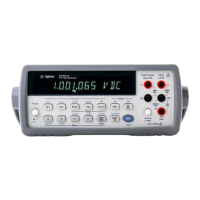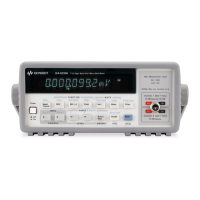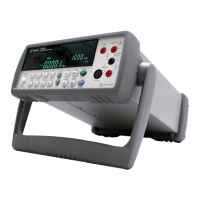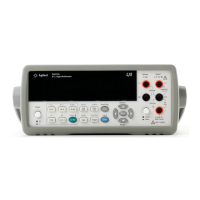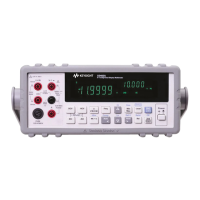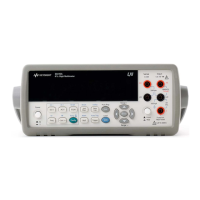138 Chapter 5 Digitizing
sampling, the minimum possible interval between samples is 20µs.
Direct Sampling
Remarks
• You cannot use autorange for direct-sampled measurements; you must
specify the range as the first parameter of the DSAC or DSDC command
(max._input parameter). The max._input parameters and the ranges they
select are:
Notice that when using the DINT memory/output format, the full scale
values for direct-sampling are 500% (5 times) the ranges of 10mV,
100mV, 1V, 10V and 100V. This is particularly important to consider
when specifying the percentage for level triggering. When specifying the
level triggering voltage, use a percentage of the range. For example,
assume the input signal has a peak value of 20V and you are using the
10V range. If you want to level trigger at 15V specify a level triggering
percentage of 150% (LEVEL 150 command). (The slew rate of the
multimeter’s amplifiers may be exceeded when measuring a signal with
a frequency >2MHz and an amplitude >120% of range; signals £120% of
range with frequencies up to 12MHz do not cause slew rate errors.)
• The multimeter’s triggering hierarchy (trigger arm event, trigger event, and
sample event) applies to direct-sampling. This means that these events must
occur in the proper order before direct sampling begins. Refer to Chapter
4 for more information on the triggering hierarchy. For direct sampling,
you can use either the TIMER sample event and the NRDGS n,TIMER
command; or the SWEEP command (SWEEP is the simpler to program).
The NRDGS and SWEEP commands are interchangeable; the multimeter
Figure 30. Direct sampling
Full Scale
max._input Parameter Selects Range SINT Format DINT Format
0 to .012 10mV 12mV 50mv
>.O12 to .120 100mV 120mV 500mV
>.120 to 1.2 1V 1.2V 5.0V
>1.2 to 12 10V 12V 50V
>12 to 120 100V 120V 500V
>120 to 1E3 1000V 1050V 1050V

